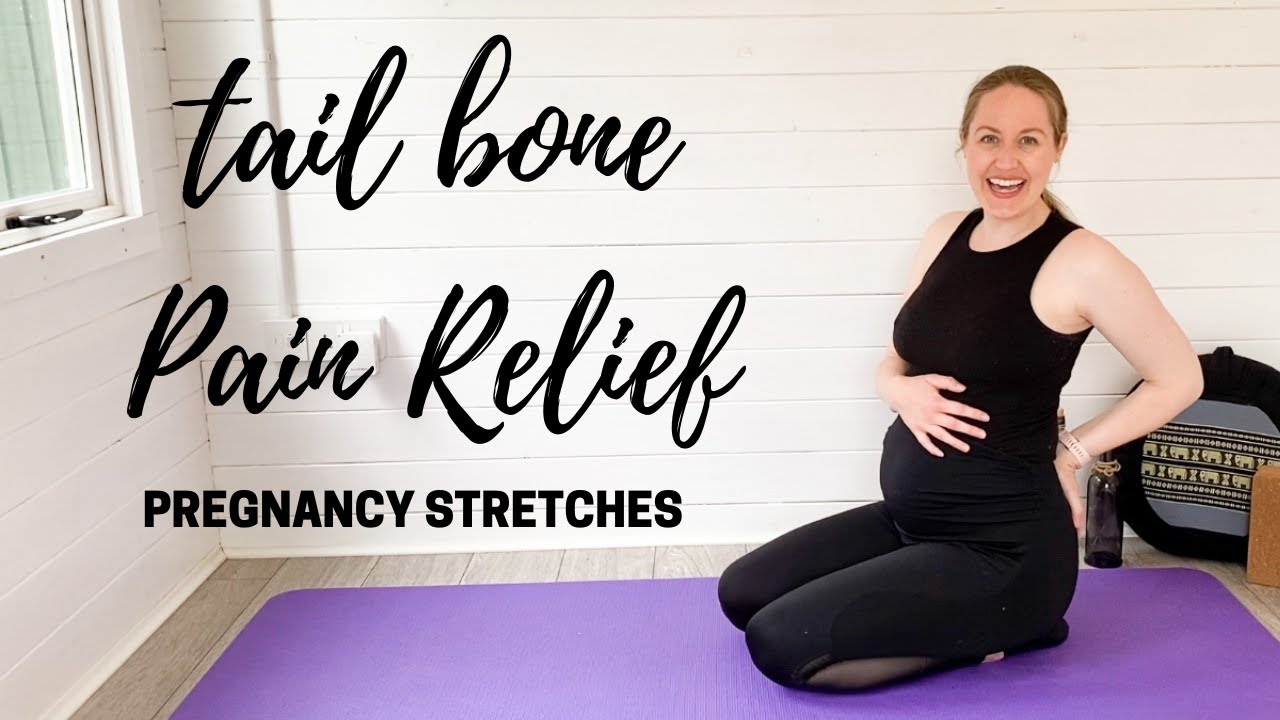I’m sure we’ve all hurt our tailbone at least once and some simple, gentle poses can provide important relief and improve mobility for those struggling with this often-overlooked discomfort. As a yoga teacher, I’ve seen a bunch of students find relief from tailbone pain through targeted yoga practices. Gentle poses that focus on pelvic tilts, hip openers, and core strengthening can help alleviate pressure on the coccyx and improve overall lower back flexibility. Consistent practice not only reduces discomfort but also improves posture and body awareness, allowing students to move more freely in their daily lives.
I used to hurt my tailbone all the time (skater kid) and that pain kept coming back until I updated my practice to work on it.

- Cat-Cow Pose. Gently move between arching and rounding the spine while on hands and knees. Students often rush this movement. Encourage slow, deliberate transitions and deep breathing. If wrists are sensitive, come down to the forearms or make fists with the hands.
- Child’s Pose. Rest your forehead on the mat with arms extended or by your sides, sitting back on your heels. Some students may feel discomfort in the knees. If this occurs, place a folded blanket between the thighs and calves for support.
- Seated Forward Fold. Sit with legs extended, folding forward from the hips. Tight hamstrings can cause lower back strain. For those with limited flexibility, suggest bending the knees slightly and placing a rolled towel under the sitting bones.
- Supine Twist. Lie on your back, draw one knee to your chest, and gently guide it across your body. Neck tension is common here. If needed, place a small pillow under the head or keep the gaze straight up instead of turning to look over the shoulder.
Affirmation: I release tension from my tailbone, allowing healing energy to flow. My body is strong, flexible, and pain-free
Remember that this isn’t a race! Let your practice meet you on the mat and never push through pain (from your tailbone or anywhere else, for that matter). When preparing for a tailbone-focused yoga practice, make sure you have plenty of cushioning handy. Like bolsters, blankets, or an extra-thick yoga mat to support sensitive areas. If you don’t have these, just get the thickest towel or blanket you can find.
Feel free to adjust or modify poses as needed, especially when moving between seated and standing positions. Throughout your session, try gentle hip openers, pelvic tilts, and supported backbends to help relieve pressure around your tailbone and encourage healthy alignment. Afterward, consider continuing to use supportive cushions when sitting for longer periods, and explore gentle self-massage techniques around your sacrum to sustain the benefits of your practice.
12 Likes
Deepen Your Practice Beyond the Mat
Finding meaningful yoga discussions and guidance can be surprisingly difficult. Discover a space where your questions are welcomed and your growth is celebrated: Start Your Journey
Has anyone tried specific breathing techniques for tailbone relief?! Deep belly breathing actually releases the pelvic floor muscles which totally takes pressure off the coccyx! It’s like magic.
Folding a blanket into a wedge shape under my sit bones during seated poses completely changed my practice (it naturally tilts the pelvis forward and takes all the pressure off the tailbone!
Now I keep a dedicated ‘tailbone blanket’ rolled up with my mat for whenever I need that extra support
If getting down to the floor feels challenging right now, please know that wall-supported poses can be just as effective for tailbone relief.
Try standing with your back against a wall and gently rolling your pelvis; this creates the same beneficial movement as cat-cow without any floor pressure. You might also explore using a sturdy chair for modified twists and forward folds, allowing your body to experience the healing benefits of yoga while keeping your tailbone completely free from contact.
Yoga meets us wherever we are, and sometimes that’s standing up.
I like this combination of gentle cat-cow variations with breathwork specifically for the coccyx area, and it feels like finally understanding a language my body had been trying to speak all along. The way it addresses both the physical discomfort and that underlying sense of guardedness we carry when we’re protecting an injury really resonated with my own healing experience.
Going into child’s pose when my tailbone acts up actually opens doors I never expected, last week when I dropped into child’s pose during a challenging sequence, my instructor quietly approached me after class to ask about my modification, and that simple conversation led to personalized suggestions that have transformed my practice in ways a general class sequence never could have.
Listening to our bodies can create opportunities for deeper learning and really furthering our practice.
The absolute for my tailbone healing experience was discovering that bringing the soles of my feet together with knees wide in savasana (instead of traditional legs-extended) creates this beautiful diamond shape that completely takes the pressure off the coccyx, pure bliss.
Incorporating gentle twists like Bharadvajasana (seated spinal twist) with a folded blanket under my sitting bones really helps redistribute weight away from the coccyx while maintaining healthy spinal mobility.
Engage mula bandha (root lock) subtly during these poses to create lift through the pelvic floor, which naturally takes pressure off the tailbone area.
Actually, seated forward fold might be counterproductive for tailbone issues (the direct pressure can aggravate things even with props. I’ve had way better results focusing on standing poses like warrior III or triangle pose where the tailbone stays completely free.
Bridge pose with a block under the sacrum (not the tailbone!) creates traction that feels incredible.
OMG, incorporating spine care sequences into my regular practice (not just focusing on the tailbone area alone ) creates this amazing ripple effect of relief throughout my entire back and pelvis.

